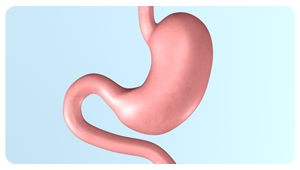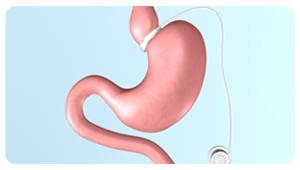Laparoscopic Adjustable Gastric Band (LAGB)



wound site
Asian diet consists mainly of volume instead of fast foods and sweets in the West. The influence of the “Western” portion sizes is causing more and more obese populations worldwide. For BMI over 30, with an over-eating habit, LAGB may be a possible solution for weight loss by reducing the portion size ingested and improving daily eating habits. This is one of the most widely adopted weight loss surgery as it is . Doctors can adjust the band according to the condition of the patient.
Procedure of LAGB:
Under normal conditions, once food is ingested, it will passes through the stomach and be broken down and absorbed in the small bowel. During the LAGB surgery, only four small incisions will be made. A silastic gastric band will be placed at the upper portion of the stomach to create a 15-20 ml “gastric pouch”. The adjustment port will be placed under the skin so it is completely invisible.
According to patient’s weight loss progress, doctors will adjust the band tightness by injecting saline solution via the adjustment port to the band. Patient will usually notice slight hold up sensation following adjustment but there should be NO pain.
The surgery is performed under general anesthesia, which takes about 1-1.5 hour. Shortly after surgery (on the same day) patient can start mobilizing and the length of stay is usually 1-2 days after surgery. No long-term medication is required. However, patients should change / restrict their diets, according to instructions given by Dr. Wong and your dietitian. Patients who had received LAGB will have to come back for follow up on a more regularly basis (every 1-2 months) during the first 2 years – as this is the “golden period” for weight loss. Long-term follow up is also needed.
Benefits of LAGB:
- Improved eating habit: many overweight patients fail to feel sense of fullness due to eating too quickly. After surgery, eating too quickly will induce an early sense of satiety and may occasionally vomit, therefore, patients are taught to adjust their eating habits.
- Low risk of surgery: overall mortality rate is approximately 0.05%
- Durability: all gastric bands are designed to last lifelong.
- eversibility: since the surgery does not involve removing or cutting any part of the stomach, the band can be easily removed by approach at any time.
- Adjustable: doctors can control the volume of saline to control the band tightness according to patient’s weight loss progress.
- Quick recovery: with the benefits of technique, patients recover quickly from surgery and can return to their normal daily activities soon after surgery.
Risk of LAGB:
- Risk of adjustment (access) port damage (up to 3%), slippage (3-8%) and erosion (up to 2%).
- Involves implantation of a “foreign body”.
- Relatively less weight loss compared with other bariatric surgeries.
The information on this website is for general educational purpose only.
Readers should consult their physician before considering treatment, and should not interpret their condition solely based on the information above.


